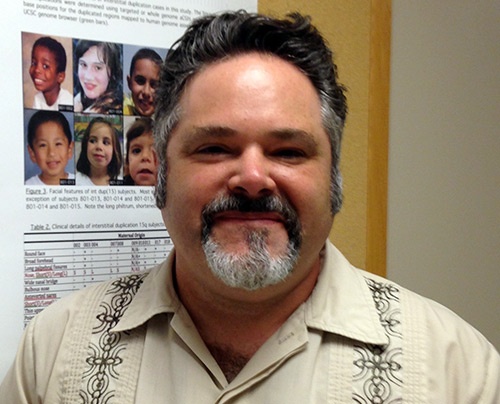There are two goals to this study: 1) To identify differences among individuals with PWS and autism from those who have PWS without autism by analyzing gene expression and 2) To identify new patterns of gene expression which may help explain the PWS condition or how other very small molecules that do not make protein (non-coding RNAs) implicated in this disorder are able to regulate gene expression in nerve cells. All of these studies will be done using cells found in tooth pulp (Dental Pulp Stem Cells (DPSC)) that can be collected from children who lose their “baby teeth” and donate these teeth for the study. DPSC will be grown in the laboratory and converted into nerve cells for gene expression studies. Eventually we hope to use these newly identified genes as potential therapeutic targets for the treatment of PWS, possibly using a methodology that inhibits the gene expression (RNA interference methods).
Research Outcomes: Public Summary
Our laboratory has been constructing a repository of PWS dental pulp stem cells (DPSC) in order to better understand the molecular changes occurring in neurons from individuals with PWS deletion as well as PWS UPD. We can do this by stimulating the DPSC to develop into neurons in culture dishes. Here we performed a method called RNAseq on these neuronal cultures from 4 individuals with PWS deletion, 4 with PWS-UPD plus autism and 4 with PWS-UPD without autism. We found a set of 12 genes that are not regulated properly (either too high or too low expression) in all PWS groups (deletion and UPD) versus control neurons. Some of these genes are known to be dysregulated in PWS (MAGEL2, SNRPN and SNURF), but the other 9 genes may provide clues about the defects in PWS neurons and also may eventually prove to be good therapeutic targets for the treatment of PWS neurological issues likes hyperphagia, cognitive function and sleep disorders. In addition, we found a defect in genes controlling mitochondrial biogenesis, function and structure in neurons from the PWS-UPD plus autism group vs the PWS-UPD minus autism group. This is a very important finding since we still do not know why individuals with the uniparental disomy form of PWS have a higher risk for autism than neurotypical individuals. These defects in mitochondria can be clearly seen in the neurons from the subjects with autism using a marker of the mitochondrial membrane called TOMM20. Having a strong and quantifiable marker of autism in the PWS-UPD subtype will allow us to test a variety of previously approved or currently available small molecules (drugs) for their ability to rescue the mitochondrial defects in these neurons. We hope that by rescuing the mitochondrial defects we can also rescue the autism phenotype in PWS-UPD individuals.
Research Outcomes: Publications
Molecular Changes in Prader-Willi Syndrome Neurons Reveals Clues About Increased Autism Susceptibility. Victor, A.K., Donaldson, M., Johnson, D., Miller, W., Reiter, L.T. Frontiers in Molecular Neuroscience. https://doi.org/10.3389/fnmol.2021.747855
Dental pulp stem cells for the study of neurogenetic disorders. Victor AK, Reiter LT. Human Molecular Genetics. 2017 Oct 1;26(R2):R166-R171.
Culturing and Neuronal Differentiation of Human Dental Pulp Stem Cells. Goorha S, Reiter LT. Current Protocols in Human Genetics. 2017 Jan 11;92:21.6.1-21.6.10.
Funded Year:
2015
Awarded to:
Lawrence Reiter, PhD
Amount:
$108,000
Institution:
The University of Tennessee Health Science Center
Research Outcomes:
Researcher:





